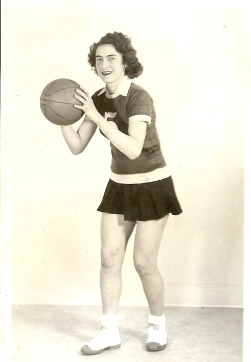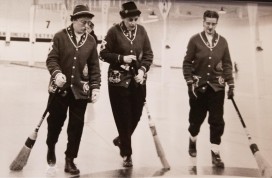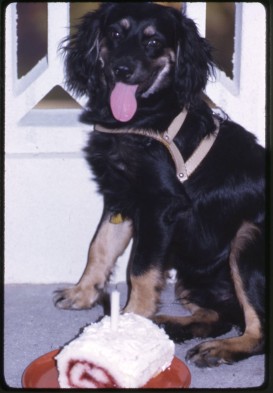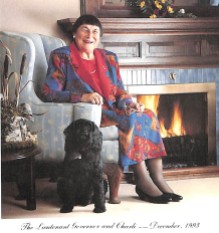I’m so honoured and proud to announce that my most recent book, A Radiant Life: The Honourable Sylvia Fedoruk Scientist, Sports Icon and Stateswoman (University of Regina Press) was both nominated for, and won, the 2021 Saskatchewan Book Award USask President’s Award for Non-Fiction. My biggest thanks to the Saskatchewan Book Awards and to the three judges in my awards category: Anne Budgell, Annahid Dashtgard, and Ariel Gordon.
The other nominees are luminous, with critically important and/or really fun books:
Genocidal Love: A Life After Residential School (University of Regina Press) by Bevann Fox.
Flat Out Delicious: Your Definitive Guide to Saskatchewan’s Food Artisans (Touchwood Editions), by Jenn
Sharp (photography by Richard Marjan).
Loss of Indigenous Eden: and the Fall of Spirituality (University of Regina Press) by Blair Stonechild.
In Search of Almighty Voice: Resistance and Reconciliation (Fifth House Publishers) by Bill Waiser.
If you’re so inclined, and didn’t get a chance, I recommend that you take the time to watch the two videos created by the Saskatchewan Book Awards for the event. The first is the video for the shortlist, so you can stock up the next time you’re in a bookstore:
The second is the video with this year’s chosen award winners and gala:
I’m absolutely gratified by the nomination, and then by the win, in part because I had such an unexpected hiccup while writing the biography. I came to the biography by way of friendship with C. Stuart Houston, a Canadian radiologist, medical historian and ornithologist. He had the idea that Sylvia’s biography should be written, and that he thought I should take the lead on that and he would help. Our partnership was not in writing (my job) but in background research, as Stuart spent a bit of time searching out some of Sylvia’s published journal articles, and spoke with several of her colleagues. It soon became clear, though, that we had quite different visions for the book. I was deeply interested in Sylvia’s sports and volunteer history, as well as her medical research after her groundbreaking cobalt-60 work and her role as the first female USask Chancellor and first female Saskatchewan Lieutenant Governor. She had a huge life, well-lived, that deserved time and energy. Stuart’s focus tended to the firsts, lists of her many accolades, and would often veer into side biographies of men and women that Sylvia hadn’t necessarily worked with or even met. I pulled him back, and off he’d go again. Even so, those differences were navigable, more or less, until we hit a rather large snag.
That large snag was the story of USask student, Christopher Lefler. Lefler came to Saskatoon to pursue a masters in art, and he was a cutting edge student doing avant garde artistic installations which regularly pushed audiences to places that they hadn’t expected to be. As I went through Sylvia’s files in the archive, then pored through newspaper articles and W5 CTV segments and documentaries and spoke with people, the connection between Lefler and Fedoruk was impossible to ignore, and impossible to leave out of the biography.
In essence, the story is simple: Christopher Lefler created artistic installations that worked to ‘out’ Sylvia Fedoruk as a gay woman, while she was the head of government as the Lt Governor of Saskatchewan. The result was a university, a provincial media, and a provincial government who moved entirely in lock-step to protect her: removing and censoring the art installation, retracting Lefler’s funding and supervisor, eventually expelling him from the university; media refusal to publish her name in connection with the story and censorship of the student newspaper (The Sheaf) when they aimed to publish the story; and the provincial government rescinding a jury-awarded Saskatchewan Arts Board grant to Christopher Lefler, the only time in Saskatchewan history that an awarded grant has been rescinded.
It was a huge, huge story and Stuart did not want the book to include it. A sentence or two, a paragraph at most, he declared. It didn’t deserve more. Stuart and I were at an impasse. I knew something was a bit wrong when he tried, on a regular basis, to steer me away from speaking with certain people, people that I knew had been close with Syl. It’s only in hindsight that I managed to put it all together: Stuart thought that even including this story would give readers the indication that Syl was, indeed, a gay woman. I, on the other hand, didn’t care at all about trying to ‘prove’ one way or the other Sylvia Fedoruk’s private life and sexual identity. I saw the story instead as one of power, of how it moves and can be focused, how it is actioned and how it protects and ostracizes. It also was a story that, in the end, showcased just how much Sylvia Fedoruk meant to the province: its government, university, media and the general public. Stuart said, vehemently, that he did not want to be part of a book that included that story. So we broke the planned co-authorship and I continued writing. It was a sad time, yet I knew I couldn’t make any other choice, and neither could he.
Even so, with the chapter fully written, I worried: should I include it? Would it overpower Sylvia’s story and her many contributions? So I asked my Mom, who in 2018 was dying from metastatic lung cancer. Mom, this is the story. Should I include it? Yes, she said, with fervor. Yes. You must include it. It’s when we see the dark parts of Sylvia’s life, Mom argued, that we also see how bright she shone. The book was dedicated to my Mom, Mary Kirychuk McGowan.
When I submitted the too-large manuscript to the press and asked for some help and direction in cutting the thing down to manageable size, I started to wonder: are they reading it? Had they got to the Lefler chapter yet? I had politely enthusiastic responses and some vague directions. Then BANG: my phone started to hop with texts and emails. A ha, I laughed. They got to that chapter. My editor was retired newspaper journalist Sean Prpick, and we meshed as a team over that chapter, in long phone calls and discussions, some cajoling, and some recalcitrant stubbornness to polish that chapter and make it as smooth as we could.
When I submitted the draft manuscript to the publisher in January of 2019, I also took a copy to Stuart and Mary Houston, for their review and editing. I gave them two different coloured pens, and instructions that I wanted both of their comments, but in different pens. It’s clear that Stuart read it first, with copious comments in red in the margins, especially about the medical history contained in the book. Mary’s pen was green, and hers made me laugh uproariously. If Stuart made a comment with which she disagreed, the green pen would gently stroke out his red exhortation and calmly say, ‘no’. It was a masterclass in editing, and in marriage.
There were no pens, of either colour, on the Lefler chapter. I wasn’t expecting them.
When the book finally went to press in 2020 and the author copies came in July, I drove to Saskatoon to take one to Stuart. Mary had, to everyone’s sadness, passed away in 2019 but Stuart and I toasted the book with a drink. Then I left and he read it, again and again and again over the course of the fall of 2020 and winter of 2021. Every few weeks, there would be another phone call and either a long chat or a message on my answering machine: I’ve read the book again, and underlined so much, and I only underline what you got right, and now the whole book is full of underlines. His praise meant so much.
On one of those calls, he quietly admitted that he saw why I included the Lefler chapter, and recognized that it belonged, even if he didn’t like it. It was, for both of us, a warm ending.
When A Radiant Life was awarded the Saskatchewan Book Award for non-fiction in late June of 2021, I tried calling Stuart. No answer, and a full voice mail so I was unable to leave a message. I kept trying, for weeks, covid still keeping restrictions on visitation. I never got through. At the end of July, I learned that Stuart had suffered a stroke and seemed to be recovering, but on July 22nd, he slipped away to join Mary. We never got that chance to connect and celebrate the win — but, I think, he knew.
I am intensely proud of this book, and I hope each and every one of you takes a chance on it, and reads it. Sylvia Fedoruk was a life force; her energy still radiates. I welcome you to come and meet her — you won’t regret it.



















